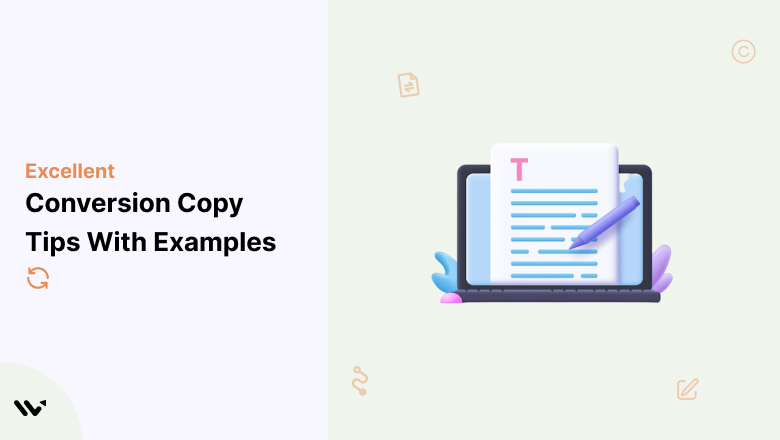You’ve spent many hours creating a product or service you believe in. You’ve set up your website and made a marketing plan, but customers aren’t buying. The traffic is there, but conversions are low. This is where conversion copywriting helps.
The user-friendly words can impact sales. It’s not just about writing; it’s about understanding your buyers, addressing their pain points, and guiding them to take action, like filling out a form or clicking a CTA.
Using conversion copywriting can boost conversion rates by up to 113%.
From home page to product pages, the right conversion copy can turn website clicks into loyal customers.
But what makes conversion copywriting so effective?
This blog explores powerful conversion copywriting tactics that can help you connect with your audience and drive more sales.

Why Is Conversions Copywriting Crucial?
In marketing, phrases like, “A picture speaks a thousand words.” But when it comes to selling any product, it’s not just about high-quality images. While customer testimonials can help, how the information is conveyed keeps a reader interested.
Let’s be honest the words in your marketing efforts are essential for giving clarity to consumers. They guide potential buyers in making decisions, whether a big purchase or something small. It is where conversion copywriting shines. It provides context, builds trust, and communicates the action you want your audience to take.
Effective copywriting generates trust and encourages engagement from your target audience. It serves as a roadmap, convincing readers on what to do next. Copywriting is not just a step in the conversion process itself.
Remember Joanna Wiebe Conversion Copywriter’s Mantra: Great copy starts with your audience’s needs and creates a clear CTA. It’s about capturing attention and helping the reader to make a decision.
12 Conversion Copywriting Tips with Examples for Maximize Conversion
Here, look at the proven conversion copywriting tactics to help you grow your business.
1. Identifying Consumer’s Needs, Pain Points, and Desires for Action
Knowing your audience is important before putting pen to paper (or fingers to keyboard). Knowing their needs, pain points, and what they want can guide how you write.

For example, Nike uses people’s desires. Their “Just Do It” campaign encourages self-improvement and motivates people to push their limits.
Create Empathy
Think about the challenges your potential customers face. What keeps them awake at night? When you can address these issues, your copy becomes more relevant.
Research is Key
Collect information through surveys, social media, and customer feedback. This will help you understand what your visitors are looking for.
Create Personas
Develop profiles that represent different segments of the audience. It will guide your tone and content, making it feel personalized.
Focus on Benefits
Highlight how your product or service fixes their problems. Make the benefits they can expect crystal clear, which can motivate them to act.
2. Create a Strong Value Proposition
A strong proposition is important for attracting attention. It explains why someone should pick your product instead of a competitor’s.
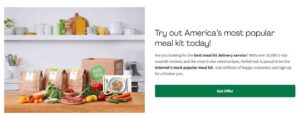
For example, HelloFresh’s messaging has a strong value proposition: “America’s Most Popular Meal Kit.” It instantly tells consumers what they offer and why they’re the best choice.
Be Clear and Specific
Avoid vague statements. Explain what makes your product or service special and valuable. Highlight specific features or benefits that set you apart from others.
Link to Pain Points
Connect your value propositions to the needs and wants you’ve found. Show clearly how your product provides relief or satisfaction.
Concise Messaging
Make your value proposition clear and strong. Use one or two sentences that go directly to the main idea.
Highlight Outcomes
Highlight the results customers can expect. It makes your irresistible offer more attractive and easier to understand.
3. Use Delicate Words In Descriptions
The words you choose shape how others understand your message. Using kind and welcoming words can make the environment feel friendly.
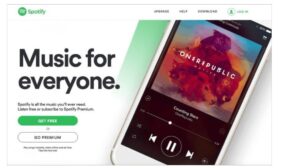
For example, Spotify uses friendly language like “Music for Everyone” to highlight inclusivity and accessibility.
Positive Framing
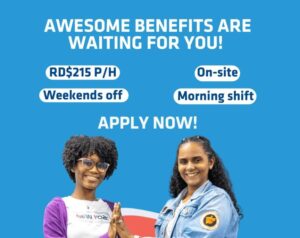
Use positive language to inspire action. Instead of saying, “Don’t miss this,” say, “Explore the great benefits for you”.
Engage the Senses
Describe your product using sensory details. It helps readers imagine the experience and makes it stick in their minds.
Conversational Tone
Write copy like you’re talking to a friend. It builds a connection and makes your compelling copy feel more memorable.
Avoid Jargon
Use clear and simple language. Complicated words can confuse readers and make your message less effective.
Build trust & FOMO
Highlight real-time activities like reviews, sales & sign-ups.
4. Optimizing Copy for Landing Pages
Landing pages are usually the first thing potential customers see from your business. It’s important to make them effective for getting conversions.

For example, Shopify keeps its one message simple. It tells users to “Start your free trial” and Build your business.
Strong Headlines
Start with a compelling headline that clearly states what your page offers. It sets the tone for the rest of your copy.
Visual Structure
Use bullet points, bold text, and short paragraphs to enhance readability. It keeps the reader’s eye moving down the page.
Single Focus
Keep your landing page simple. Focus on one clear idea that matches your call to action. It will help visitors understand what you want them to do.
Trust Elements
Include customer testimonials or security badges. It builds trust and reassures website visitors about making a decision.
5. Using Emotional Triggers to Drive Action
Emotions are important in decision-making. Using these feelings can encourage readers to take action.

For example, Airbnb often connects with people through its marketing. In their “Live There” campaign, they encouraged travelers to explore places like locals. This campaign showed the joy of discovering new places and cultures.
Create a Sense of Urgency

Highlight limited-time offers to encourage quick decisions. Phrases like “limited stock” encourage immediate action.
Storytelling
Share relatable stories that evoke emotions. Personal narratives can make your copy more engaging and relatable.
Appeal to Imagery
Use visuals that connect emotionally with your words. This combination can make your message more powerful.
Personal Connections
Use “You” to create a direct connection with the reader. It makes them feel as if you’re speaking directly to them.
6. Writing Clear & Attractive CTAs
Calls to action (CTAs) guide your visitor toward the desired action. Make them clear, compelling, and visually appealing.
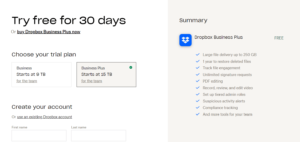
For example, Dropbox uses a simple call to action, “Try free for 30 days.” The bright button catches the eye, making it easy for users to take action.
Use Action Verbs
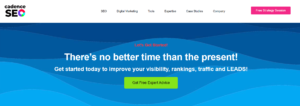
Choose strong verbs that inspire action. Phrases like “Get started,” “Join now,” or “Claim your free consultation” are effective.
Visual Appeal
Make CTAs stand out. Use bright colors and plenty of empty space to draw attention. It helps users see what you want them to do. Clear and bold CTAs can lead to more clicks and actions.
Specific Guidance

Be clear about what happens next. Instead of a generic “Download,” use “Download your free e-books now!”
Test Variations
Experiment with different wording and designs. A/B testing can show which CTAs perform better, helping you refine your approach.
Build trust & FOMO
Highlight real-time activities like reviews, sales & sign-ups.
7. Using Social Proof
Social proof helps build trust and credibility, encouraging potential buyers to take action. When people see others using your product or service, they feel more confident in their choices.
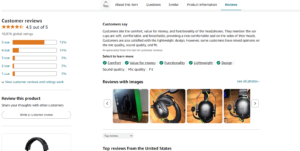
For example, Amazon effectively uses customer reviews and ratings on every product page. It helps buyers feel confident by showing feedback from other users.
Share Customer Testimonials
Display quotes from satisfied customers. Real-life experiences can validate your claims and build trust. It can encourage more people to believe in your product or service.
Utilize User-Generated Content
Ask customers to share their experiences on social media. Featuring this content can build a community around your brand.
Highlight Stats and Success Stories
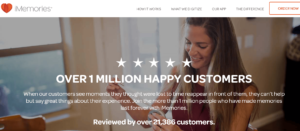
Use strong statistics or case studies to show how well your product works. It gives clear evidence of success. For example, “Join more than 1 million satisfied customers.”
Leverage Influencer Endorsements
If relevant, consider working with influencers who can promote your product. Their followers usually trust their advice, which can increase credibility.
8. Using Urgency and FOMO
Urgency can push potential customers to act quickly. Using fear of missing out (FOMO) can increase sales. Creating a sense of urgency makes people feel they need to buy now.

For example, Booking.com frequently uses urgency and FOMO with messages like, “Only 2 rooms left!” or “Someone just booked this hotel,” so act fast.
Limited -Time Offers
State clearly that the offer is only available for a short time. It encourages visitors to decide quickly.
Low Stock Alerts
If stock is low, mention it. It creates a fear of missing out and encourages people to buy right away.
Countdown Timers
A countdown timer on your home page creates a sense of urgency. It reminds visitors that time is limited.
Scarcity
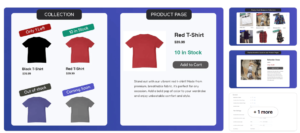
Tell visitors when a product has few items left. Phrases like “Only 1 left!” can encourage quick buying.
9. Using A/B Testing to Refine Conversion Copy
A/B testing helps improve your conversion copy. By trying out different versions, you can find out what works best.
Test One Element at a Time
Concentrate on one element, like the headline, CTA, or images, to see how it affects conversions. Test each element separately to see which one improves results the most.
Analyze Results
Use analytics tools to see which version did better. Look at conversion rate and user engagement metrics. It will help you understand what works best and make improvements.
Iterate and Improve
Adjust based on your findings and test again. Keep refining to improve performance over time. Always look for ways to enhance your results and learn from each test.
Document Findings
Keep track of your tests and results. It creates a valuable reference for future campaigns and helps you learn from past experiences. By reviewing your past experiences, you can improve your strategies and make better decisions. Keeping a record allows you to see what worked well and what didn’t, so you can adjust your approach next time.
Build trust & FOMO
Highlight real-time activities like reviews, sales & sign-ups.
10. Creating Copy for Each Stage of the Funnel
Understanding the different stages of the customer journey is important for effective conversion copywriting. Tailor your messages accordingly.
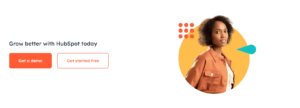
For example, HubSpot creates custom content for every stage of the sales funnel. They start with educational blog posts at the top, offer free consultations, and “Get a demo” at the bottom.
Awareness Stage
Focus on educating your visitor. Use a blog post, a guest post, or informative guides to introduce your brand and address customers pain points.
Consideration Stage
Potential customers are looking at their final choice. Offer comparison guides or clear product descriptions highlighting features and benefits.
Decision Stage
Customers want to buy. Use convincing words on your sales page and web page. Highlight guarantees and limited-time offers.
Post-Purchase Engagement
Send thank-you emails, satisfaction surveys, or loyalty program invites to keep customers interested and encourage them to return.
11. Personalizing Copy for Higher Conversions
Personalization improves the customer experience and increases the conversion rate. Customize your messages to fit each person’s needs. When customers see that you care about their preferences, they are more likely to engage with your brand.
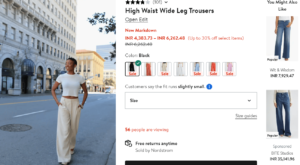
For example, Nordstrom’s personalized recommendations, “You might also like”, use customer data to suggest products based on past purchases. This approach helps increase sales.
Leverage Customer Data
Use past conversations to make your messages personal. Talk about items they bought before or recommend similar products.
Segment Your Audience
Group your audience by their behavior or preferences. It helps you send messages that connect with the target audience.
Dynamic Content
Use dynamic content that changes based on what users do. It makes the experience more relevant and engaging.
Personalized Emails
In email campaigns, personalize by using the recipient’s name and customizing the content to match their interests.
12. Optimize Copy for Online Form
Online forms are important for conversion strategies. However, if they are too long or complicated, visitors will leave them. Shorter forms with clear instructions encourage more people to complete it.
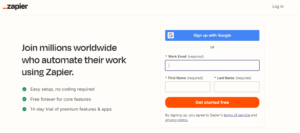
For example, Zapier’s signup form is one page. It only asks for your email address and name to get started.
Keep it Short
Only ask for the information you need. Long forms can feel overwhelming, so split them into smaller sections if necessary.
Make It User-Friendly
Write copy using clear labels and guide users through the process step-by-step. Add more details where needed to help users understand better.
Provide Clear Instructions
Let users know exactly what they need to do, whether submitting an email address or filling in personal details.
Use a Persuasive CTA
Instead of a generic “Submit” button, use action-oriented CTAs like “Join Now” or “Get Started Free”. This approach encourages users to take immediate action and makes the process feel more engaging.
Conclusion
We’ve shared 12 practical tips for conversion copywriting, each with real examples. These strategies, like knowing your visitor and crafting a strong call-to-action, show how effective words can convert readers into customers.
By using direct response copywriting techniques, you can address your audience’s needs and feelings. These tips also connect to conversion rate optimization, helping each piece of copy guide customers on their buying journey. Remember, great copy isn’t just about writing; it’s about inspiring action and boosting sales.
